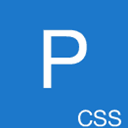Material-UI Alternatives

Material-UI
Our vision is to provide an elegant React implementation of the Material Design guidelines that can be customized to fully match your brand.
The Material Design guidelines are an incredible starting point, but they do not provide guidance on all aspects or needs of an application. In addition to the guidelines-specific implementation, we want Material-UI to become whatever is generally useful for application development, all in the spirit of the Material Design guidelines.
Therefore, Material-UI will be not only be an implementation of the Material Design guidelines, but a general use UI library of components that are needed by many. This generalized use doesn't imply any other design methodology. It also means we will have components or combinations that are simply not addressed in the design guidelines.
We will focus on providing all the low-level tools needed to build a rich user-interface with React. Once we implement the Material design specification (which is a bar set quite high), you should be able to take advantage of it for you own business with any style customization needed. We want to see companies succeeding using Material-UI in a way that matches their brand, close to the material philosophy or not. We don't want them to feel that their UI simply looks like another Google product.
From a developer's point of view, we want Material-UI to:
- Deliver on fully encapsulated / composable React components.
- Be themeable / customizable.
- Be cross browser compatible and accessible.
- Promote developer joy, a sense of community, and an environment where new and experienced developers can learn from each other.
Best Material-UI Alternatives
Are you looking for alternatives to Material-UI? Please see our top picks. In this article, we provide the list of some Material-UI alternatives that will work on Windows and other platforms.

Bootstrap
FreeOpen SourceSelf-HostedHTML5 BoilerplateJavaScriptBootstrap is a open-source collection of tools for creating browser sites and applications. It contains HTML and CSS-based design templates for typography, forms...
Features:
- Responsive design
- Active Development
- Clean design
- Documentation
- Premade templates
- Responsive design
- Resposive layout

Foundation
FreeOpen SourceWebFoundation is an easy to use, powerful, and flexible framework for building rapid prototypes and production code on any kind of device.

Semantic UI
FreeOpen SourceWebSemantic empowers designers and developers by creating a shared vocabulary for UI.

UIkit
FreeOpen SourceWebA lightweight and modular front-end framework for developing fast and powerful web interfaces.

Materialize
FreeOpen SourceWebMaterialize is a modern responsive CSS framework based on Material Design by Google
Features:
- Material design
- CSS framework
- Mobile framework
- Responsive design
- Web Development

Polymer
FreeOpen SourceMacWindowsLinuxPolymer is a library that uses the latest web technologies to let you create custom HTML elements. Build anything from a button to a complete application as an...
Features:
- Developer Tools
- Web Development

HTML5 Boilerplate
FreeOpen SourceWebA rock-solid default for HTML5 awesome. HTML5 Boilerplate is the professional badass's base HTML/CSS/JS template for a fast, robust and future-proof site. After...

Skeleton
FreeOpen SourceWebSkeleton is a small collection of CSS & JS files that can help you rapidly develop sites that look beautiful at any size, be it a 17" laptop screen or an...
Features:
- CSS framework
- Responsive design

Purecss
FreeOpen SourceWebA set of small, responsive CSS modules that you can use in every web project.

Element UI
FreeOpen SourceWebSelf-HostedCSSJavaScriptVue.jsElement, a Vue 2.0 based component library for developers, designers and product managers.
Upvote Comparison
Interest Trends
Material-UI Reviews
Add your reviews & share your experience when using Material-UI to the world. Your opinion will be useful to others who are looking for the best Material-UI alternatives.